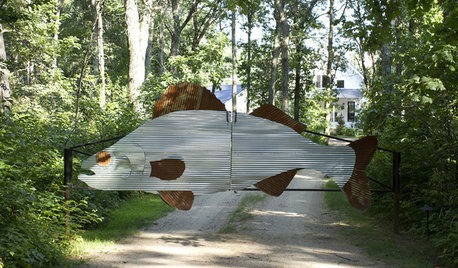A rose as evidence for the defence
mashamcl
10 years ago
Related Stories

MOVINGWhat Those Home-Sale Disclosures Are Really Saying
Avoid costly surprises by knowing what’s included in a home seller’s disclosure, what’s not and what you can do if you suspect foul play
Full Story
HOUZZ TOURSHouzz Tour: Glass House on a Lowcountry Lagoon
Steel framing supports walls of glass in soaring South Carolina island home
Full Story
GARDENING GUIDESCalifornia Gardener's June Checklist
Update your hydrangeas, catch up on tomatoes and more ways to enjoy your California garden in June
Full Story
FUN HOUZZ11 Ways to Have More Fun at Home
Every house needs a touch of humor — a funny sign or an accessory that always makes you smile. Here’s where to begin
Full Story
MIDCENTURY STYLE6 Inspiring Midcentury Australian Homes
Avant-garde homes of the '50s helped fuel decades of Australian innovation
Full Story
HOUZZ TOURSMy Houzz: A Serial Thrifter's Comfortably Bohemian Bungalow
Repurposed pieces, budget-friendly decor and midcentury hand-me-downs give this 1940s house laid-back appeal
Full Story
REMODELING GUIDESOriginal Home Details: What to Keep, What to Cast Off
Renovate an older home without regrets with this insight on the details worth preserving
Full Story
DESIGNER SHOWCASESSan Francisco Decorator Showcase: Happy Days Are Here Again
Creative ideas, bold colors and inventive materials abound under one (very large) roof
Full Story
HOUZZ TOURSMy Houzz: Hard Work Pays Off in a DIY Cottage Renovation
First-time homeowners roll up their sleeves and give their midcentury Montreal home an infusion of style and personality
Full Story
GARDENING GUIDESSouthern California Gardener's October Checklist
Get planting happy this month — so many natives, bulbs, cool-season flowers and vegetable crops to choose from, so little time ...
Full Story







ogrose_tx
Kippy
Related Discussions
Arise, in defence of Zephirine (or I smite her with a mattock)
Q
New evidence shows that the virus is found only in symptomatic parts
Q
a-rose-is-a-rose-is-a-rose-unless-its-an-earth-kind-rose/
Q
Beginner rose recommendations, TX vendors & evidence-based resources
Q
jerijen
sherryocala
kittymoonbeam
nanadollZ7 SWIdaho
Poorbutroserich Susan Nashville
ingrid_vc so. CA zone 9
mad_gallica (z5 Eastern NY)
titian1 10b Sydney
brenda_l_w
mlle_melanie
cath41
jerijen